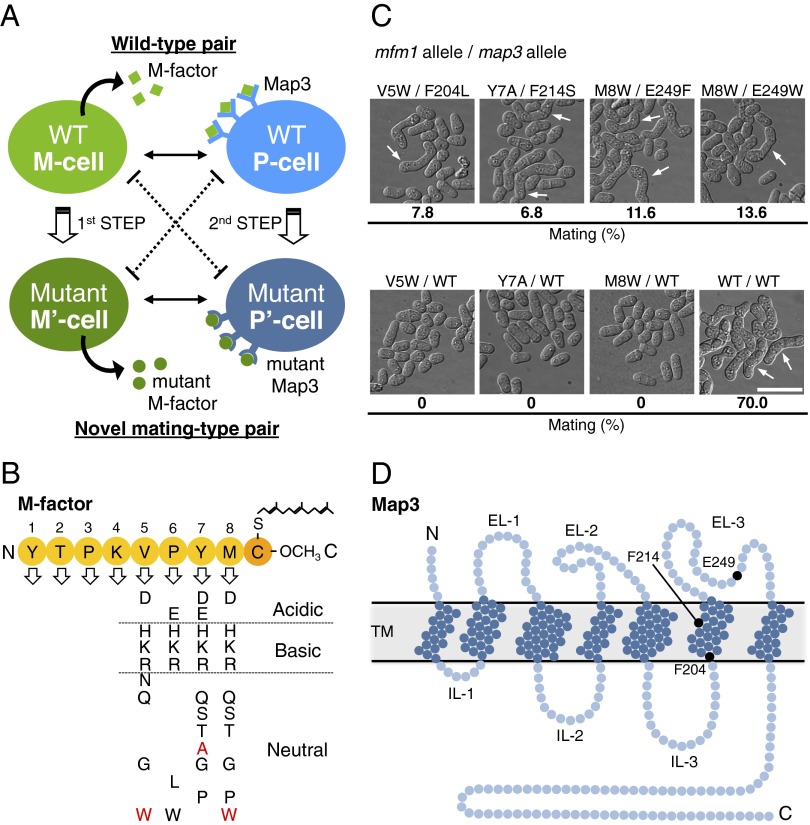Fig. 1.
Creation of novel mating-type pairs by screening for map3 mutants that suppress mating-deficient M-factor mutants. (A) Strategy for creating a novel mating-type pair. The first step was the comprehensive amino acid substitution of mating pheromone M factor by in vitro site-directed mutagenesis as described previously (18). Among 152 single residue-substituted missense mutants, 35 sterile M-factor mutants were selected (shown in B). The second step was random mutagenesis of the map3+ gene encoding M-factor receptor by error-prone PCR. We screened for suppressor map3 mutants that rescued the sterility of each of the M-factor mutants. In this way, novel mating-type pairs were successfully isolated. (B) List of sterile M-factor mutants. Nonfunctional substitutions are indicated by one-letter codes. The substitutions shown in red were suppressed by mutant Map3. (C) Mating ability of four genetically modified mating-type pairs isolated by screening. The mfm1 (encoding M factor) allele/map3 allele in each pair is indicated above the microphotographs, which show typical cell morphology and mating frequency for that pair. White arrows indicate typical zygotes. (Scale bar: 10 µm.) (D) The structure of Map3 predicted by hydropathy analysis (15), in which the positions of three possibly important residues for ligand recognition are indicated as black circles. EL, extracellular loop; IL, intracellular loop; TM, transmembrane.

